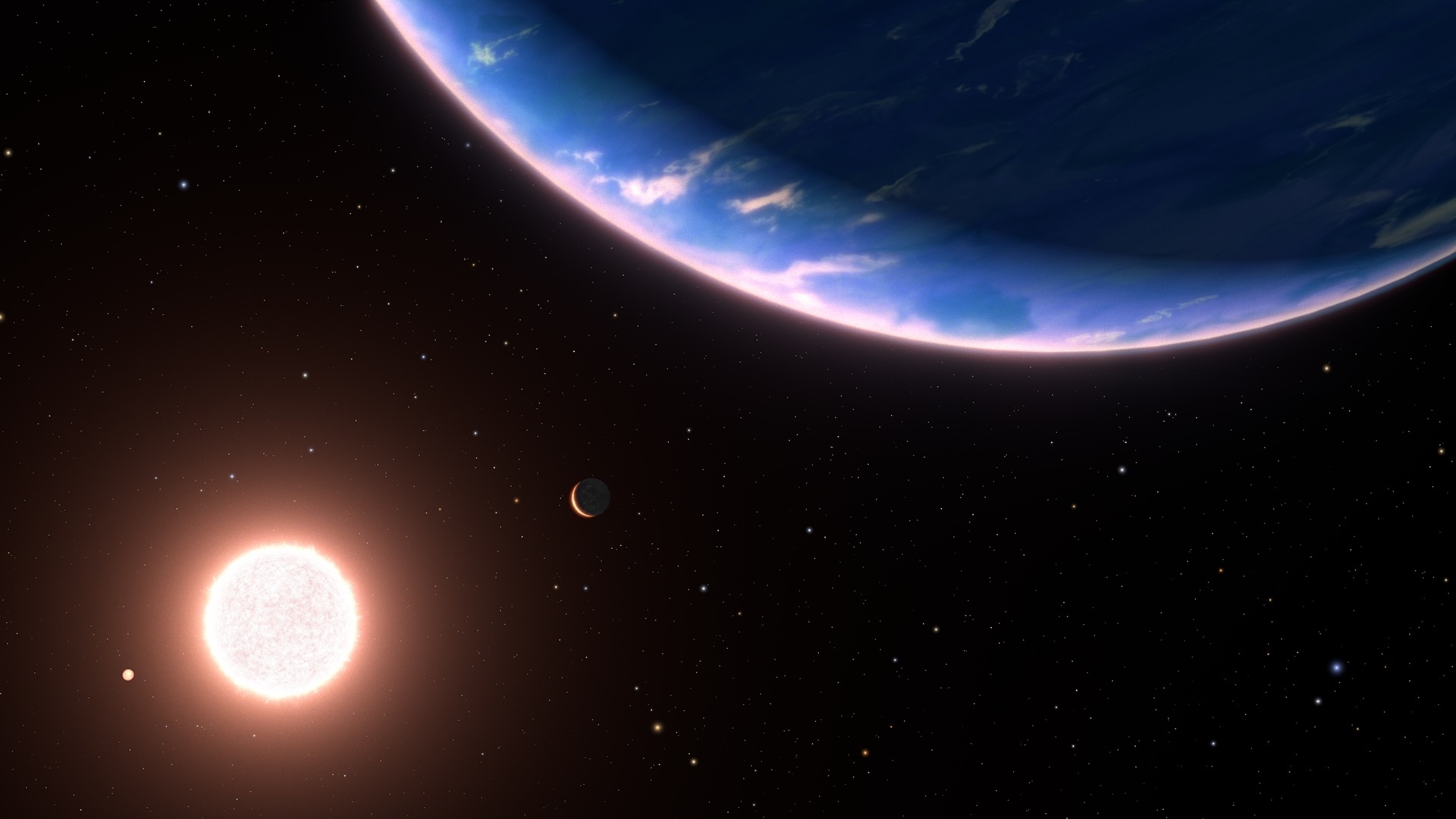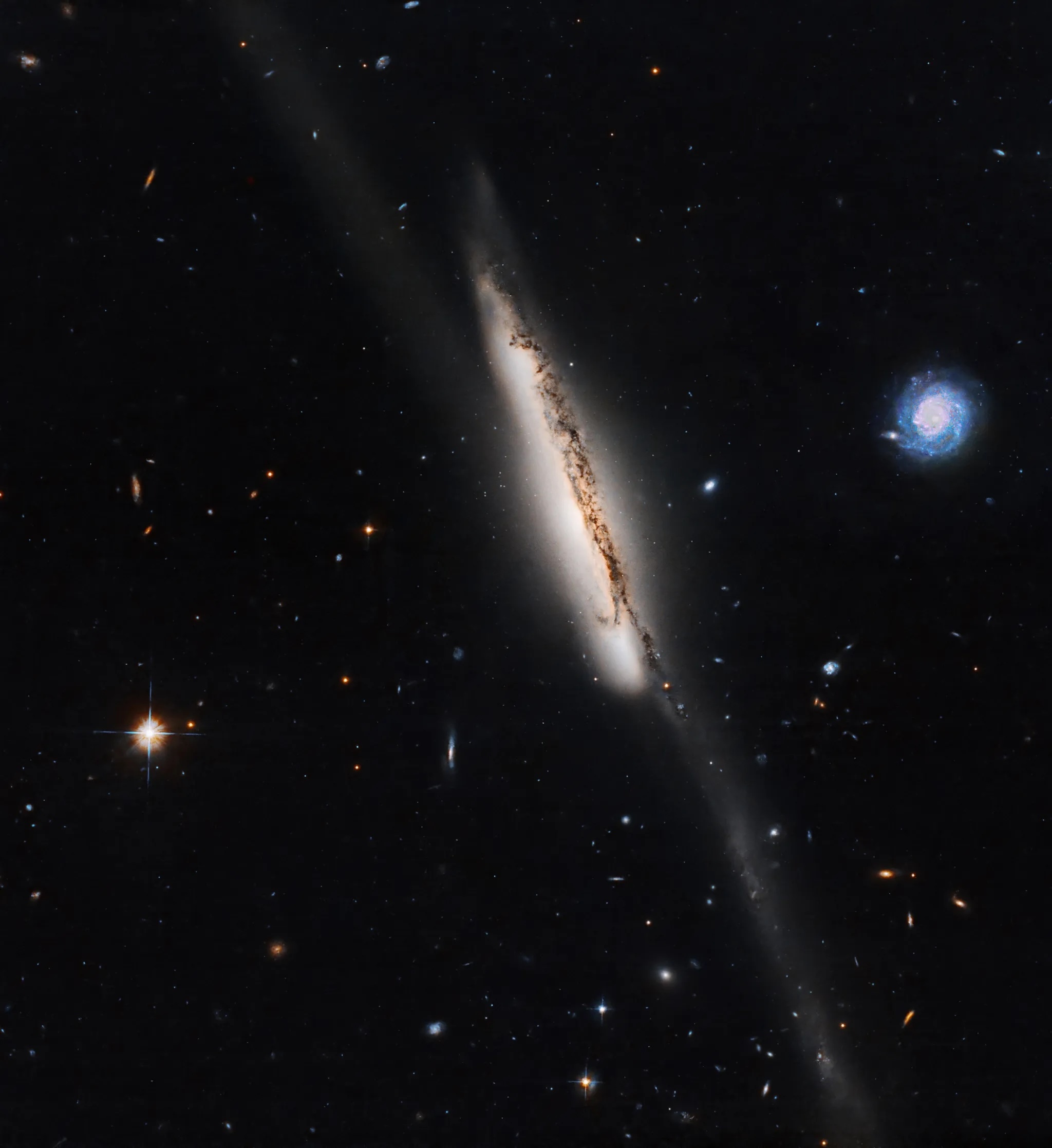Astronomers using NASA's Hubble Space Telescope observed the smallest exoplanet where water vapor has been detected in the atmosphere. At only approximately twice Earth's diameter, the planet GJ 9827d could be an example of potential planets with water-rich atmospheres elsewhere in our galaxy.
27.01.2024

"This would be the first time that we can directly show through an atmospheric detection, that these planets with water-rich atmospheres can actually exist around other stars," said team member Björn Benneke of the Trottier Institute for Research on Exoplanets at Université de Montréal. "This is an important step toward determining the prevalence and diversity of atmospheres on rocky planets."
"Water on a planet this small is a landmark discovery," added co-principal investigator Laura Kreidberg of Max Planck Institute for Astronomy in Heidelberg, Germany. "It pushes closer than ever to characterizing truly Earth-like worlds."
However, it remains too early to tell whether Hubble spectroscopically measured a small amount of water vapor in a puffy hydrogen-rich atmosphere, or if the planet's atmosphere is mostly made of water, left behind after a primeval hydrogen/helium atmosphere evaporated under stellar radiation.
"Our observing program, led by principal investigator Ian Crossfield of Kansas Universityin Lawrence, Kansas, was designed specifically with the goal to not only detect the molecules in the planet's atmosphere, but to actually look specifically for water vapor. Either result would be exciting, whether water vapor is dominant or just a tiny species in a hydrogen-dominant atmosphere," said the science paper's lead author, Pierre-Alexis Roy of the Trottier Institute for Research on Exoplanets at Université de Montréal.
"Until now, we had not been able to directly detect the atmosphere of such a small planet. And we're slowly getting in this regime now," added Benneke. "At some point, as we study smaller planets, there must be a transition where there's no more hydrogen on these small worlds, and they have atmospheres more like Venus (which is dominated by carbon dioxide)."
Because the planet is as hot as Venus, at 800 degrees Fahrenheit, it definitely would be an inhospitable, steamy world if the atmosphere were predominantly water vapor.
At present the team is left with two possibilities. One scenario is that the planet is still clinging to a hydrogen-rich atmosphere laced with water, making it a mini-Neptune. Alternatively, it could be a warmer version of Jupiter's moon Europa, which has twice as much water as Earth beneath its crust." The planet GJ 9827d could be half water, half rock. And there would be a lot of water vapor on top of some smaller rocky body," said Benneke.
If the planet has a residual water-rich atmosphere, then it must have formed farther away from its host star, where the temperature is cold and water is available in the form of ice, than its present location. In this scenario, the planet would have then migrated closer to the star and received more radiation. The hydrogen was heated and escaped, or is still in the process of escaping the planet's weak gravity. The alternative theory is that the planet formed close to the hot star, with a trace of water in its atmosphere.
The Hubble program observed the planet during 11 transits – events in which the planet crossed in front of its star – that were spaced out over three years. During transits, starlight is filtered through the planet's atmosphere and has the spectral fingerprint of water molecules. If there are clouds on the planet, they are low enough in the atmosphere so that they don't completely hide Hubble's view of the atmosphere, and Hubble is able to probe water vapor above the clouds.
"Observing water is a gateway to finding other things," said Thomas Greene, astrophysicist at NASA's Ames Research Center in California's Silicon Valley. "This Hubble discovery opens the door to future study of these types of planets by NASA's James Webb Space Telescope. JWST can see much more with additional infrared observations, including carbon-bearing molecules like carbon monoxide, carbon dioxide, and methane. Once we get a total inventory of a planet's elements, we can compare those to the star it orbits and understand how it was formed."
GJ 9827d was discovered by NASA's Kepler Space Telescope in 2017. It completes an orbit around a red dwarf star every 6.2 days. The star, GJ 9827, lies 97 light-years from Earth in the constellation Pisces.
The Hubble Space Telescope is a project of international cooperation between NASA and ESA. NASA's Goddard Space Flight Center in Greenbelt, Maryland, manages the telescope. The Space Telescope Science Institute (STScI) in Baltimore, Maryland, conducts Hubble and Webb science operations. STScI is operated for NASA by the Association of Universities for Research in Astronomy, in Washington, D.C.
Hubble Captures a Faint Bridge of Stars

One of the galaxies from a galactic group known as Arp 295 is visible in this new NASA Hubble Space Telescope image, along with part of the faint 250,000-light-year-long bridge of stars and gas that stretches between two of the galaxies. The galaxies have passed close enough together that their mutual gravity created this cosmic streamer.
When galaxies pass close enough to gravitationally disrupt each other's shape, they are known as interacting galaxies. This type of interaction happens over billions of years and repeated close passages can result in the merger of the two galaxies. Galactic mergers are thought to be common, and even our own Milky Way is expected to merge with the massive, neighboring Andromeda galaxy in about 4 billion years.
Arp 295 is made up of three spiral galaxies designated Arp 295a, Arp 295b, and Arp 295c. Arp 295a is the edge-on galaxy seen in the center of the image, and Arp 295c is the smaller and bluer face-on spiral to its right. Arp 295b is off the top left of this image and not visible here. Together, they are the largest of a loose grouping of galaxies located about 270 million light-years in the direction of the constellation Aquarius.
